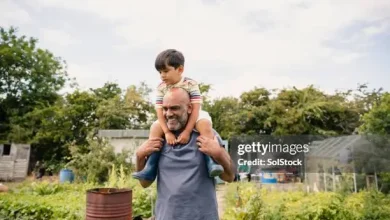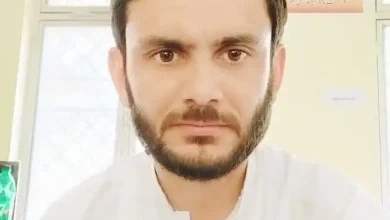Shatter the Silence: Protecting Kids from Abuse
Educating Young Minds to Distinguish Between Safety and Harm
I was watching the famous show Satyamev Jayate , hosted by Amir Khan, years ago. Breaking Silence: Child Sexual abuse was one episode about trauma of child abuse by trusted persons[“Satyamev Jayate” Break the Silence: Child Sexual Abuse (TV Episode 2012) – IMDb]. In a woman speaks with Amir Khan about the trauma she had as a child when she was abused by her trusted person of the family. She lately pointed out the offender to her father and relatives. The number of such incidents was shocking, with one out of every two children being abused by someone who is considered a trusted person. Once again while talking with my journalist, who recently visited the Malala Foundation school, was fascinated by their organization, and intended to enroll his children in that school [Our Work | Malala Fund]. It will be a best decision for my children if they get admission in that school, they are even teaching their students about good and bad touch. I thought about it for a little while. What do the expressions “good touch” and “bad touch” mean? After that, I searched for it on Google. I thought the whole day about this newer learning and consequences relating to it. The idea of child abuse is one that has been around for decades. The “good touch, bad touch” notion is a method of teaching youngsters about body safety and permission. It helps kids identify and report dangerous situations by teaching them the difference between proper and inappropriate physical touch.
Good touch is a term that describes healthy, voluntary physical contact that makes a youngster feel safe and cherished. Examples include receiving hugs from parents, high-fives from friends, or mild pats on the back. These touches are often initiated by the child and make them feel good.
Bad touch, on the other hand, is any physical contact that makes a youngster feel uncomfortable, terrified, or bewildered. It might involve unwanted touching of private parts, inappropriate contact by adults or other children, or any touch that violates a child’s personal boundaries. When someone is touched inappropriately, it generally entails concealment, guilt, and fear, which can leave emotional scars that last a long time.
It is essential to teach children the difference between good touch and poor contact in order to keep them safe and healthy. It helps kids develop a healthy sense of self and body autonomy, which allows them to detect and report abusive circumstances. We can provide children with a safer atmosphere in which they can develop and flourish by giving them information and vocabulary.
furthermore, it is crucial to handle this subject with care and in a manner that is suitable for the age group. Younger children may benefit from basic explanations and visual aids, while older children can manage more sophisticated talks. The most important thing is to create an environment that is open and trusting, where children feel comfortable talking about their bodies and any worries they may have.
It is important to teach youngsters about good and negative touch so that they can learn about body safety and consent. Children can protect themselves from abuse, exploitation, and harassment by learning about appropriate and inappropriate physical contact. They can also talk to their parents about these issues without fear. Every child should be taught these concerns at home and at school, and they should be included in the curriculum at every level of education. In my opinion, every child should be educated about good and bad touch as soon as they start school. This education should continue until they reach university or college. Being a parent is a challenging job. It requires that the child be dropped off at the school gate, where they will be under the care of the school authorities. After arriving at the school gate, any parent should pick up their child. The first step in ensuring a child’s safety is to establish a connection between the parent and the school management. Children, especially younger ones, should not be sent to buy utilities for the home. This is because they are often taken advantage of by predators, as was recently reported by voicepkdotnet [(51) Manizeh Bano of SAHIL on Child Sexual Abuse – YouTube][ sahil.org/wp-content/uploads/2023/05/Cruel-Numbers-2022-Email.pdf]. the outdated information released by SAHIL are eye openers showing stark reality and depth and extent of the seriousness of this moral and ethical dilemma. There are a number of strategies for handling your child’s knowledge. First, communication should be open. A parent should create a safe space for their child so they can discuss their feelings and experiences. Parents should teach their children that they have the right to say no to any touch that makes them uncomfortable, regardless of who it comes from. secondly, schools should assist youngsters in trusting their parents as partners of information provison and they must turn to if they feel threatened. Educators should convey these messages through role plays, seminars, and conferences on predation, as well as by providing timely information on how to report harassment and abuse to the police.
When we teach children about these ideas, we give them the ability to identify inappropriate behaviour and ask for assistance, which in turn creates a supportive atmosphere that places their safety first.
It is important to teach children about “good touch” and “bad touch” from an early age so that they can be protected and develop emotionally. Starting this teaching early helps youngsters to notice and respond to unwanted behaviors, giving a sense of security and confidence.
Also read; 11 children abused per day during 2023, Says Sahil annual report
Children who understand these concepts are more equipped to express their boundaries and communicate discomfort. This understanding not only helps avoid abuse but also facilitates open discussion between parents and children, establishing a trusting environment where children feel secure to share their experiences.
child abuse is one of the most explored topic, widely explored and discussed, videographed only need of the hour is to streamline mechanism of reporting and punishment be handled by a fast trial courts locally so that the ratio of child abuse decline. There are number of aspects which are left untouched in this essay of which motives of sexual abuse are on top. May be some other time or readers can login to a credible research site and find out statistics of child abuse in Pakistan and also search for the motives particularly financial, harassment, social inequality and maybe some others as I found them perfect fit in the case of our land of pure.




